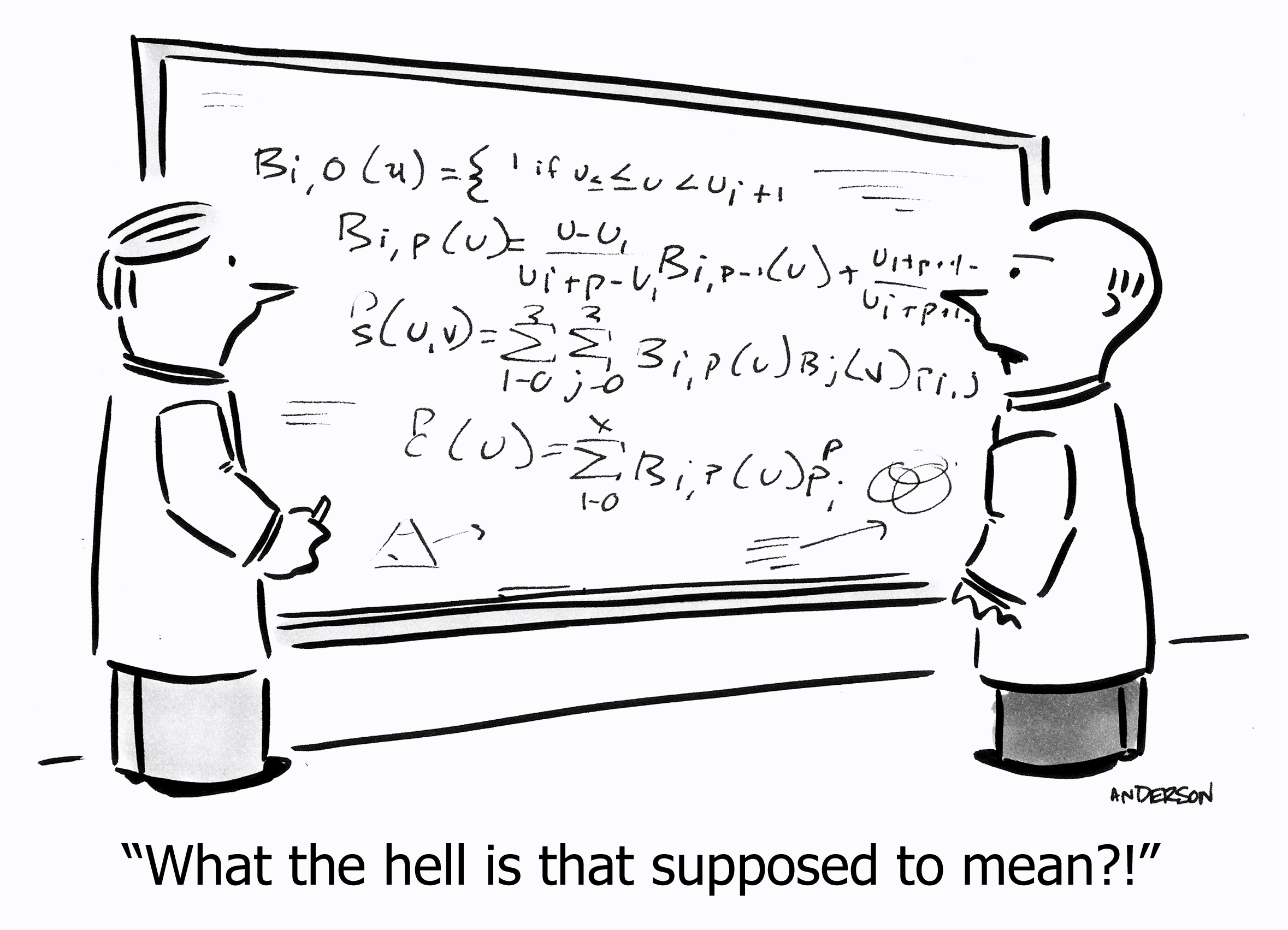The full story of “the one important thing” for startups
You might assume that I have no major blind spots when it comes building little tech startups. I pontificate on concepts that I learned through hard work, luck, observation, and failure, so surely I have all my bases covered. No stupid mistakes happening over here, no sir.
Completely untrue, of course.
I just had a new epiphany, which if you just skim the bold bits you’ll think is old news, but I thought that too, and by skimming I missed its important implication.
I was listening to Noah Kagan1 talk to the current crop of Capital Factory companies, when he said something so simple, so obviously correct, and yet it completely changed how I thought about my approach to WP Engine.
1 Founder of AppSumo, the marketing mind behind Mint and the author of Million Dollar Weekend.
I’m sure he won’t mind me revealing this little nugget, seeing as this is the same Noah who does topless video interviews and will show you his underwear if asked, though I’m not sure why anyone asks, except that they know he’ll do it, and someone so willing might have something worth looking at.
He said: “A startup can focus on only one metric. So you have to decide what that is and ignore everything else.”
It might sound like the usual platitude that “startups need focus!” It’s not, as he proceeded to explain. I’ll explain it here using WP Engine as the foil rather than revealing secrets about AppSumo because, although AppSumo internal metrics are both impressive and instructive, it isn’t my place to reveal them.
I was talking to Noah a few weeks later about WP Engine, inspired but still not fully understanding what he meant. It went something like this:
NOAH: So if you could change just one thing at WP Engine, what would it be?
ME: Well Dharmesh told me it’s our cancellation rate. And Dharmesh is a minor deity in the SaaS business-model pantheon, as evidenced by his well-reasoned Business of Software speeches and tangible success with HubSpot.
(Yes, I proceeded to lecture Noah about SaaS business models, as if he didn’t already understand, probably to prove that I did know, or to finally work out for myself what I believe. If this isn’t enough for you, here’s my expanded brain dump on cancellation rate.)
See cancellation rate is indicative of several important things. First, whether we’re providing a genuinely valuable and desirable service. After all, I can bludgeon a person into signing up with us through marketing and salesmanship, but if they don’t stick around it proves we’re not really providing something they need, at least not at this price. So it’s an important measure of the service itself.
Second, and more “metrics-y,” cancellation rate is one of the keys to computing customer LTV (lifetime value). If we know a typical customer pays us $50/mo and stays with us for 30 months, that’s $1500 in “lifetime” revenue. That helps us answer questions like: How much can we spend to acquire a customer? Or: How many customers do we need to produce $10m in revenue?
But the key to computing LTV is “how many months will a customer stay with us,” and the key to that is cancellation rate—the higher the rate, the fewer the months, and LTV plummets. High LTVs are nice because it means the business has good cash flow, and means we can spend more on things like marketing and advertising.
So yeah, I want cancellation rate to go down!
NOAH: OK.
(That’s how Noah says, “I heard everything you said. I’ve heard it before. It’s technically accurate, but you’re a dumbass and you’re missing the whole point. But you won’t listen to the truth until you get this bile out of your system.” Noah is a man of few words. Unlike me.)
NOAH: So do you think you could get your cancellation rate from 3% to 2.5%?
ME: Yeah I think probably we could, and that could increase our LTV by 15%.
NOAH: Let’s say you did that. Congratulations. What would be different?
ME: Oh, we’d have more revenue and we could spend more on ads.
NOAH: That’s it? All that would change is you’d spend more on ads? That’s important? That makes the business fantastic?
ME: Well no, I guess things wouldn’t change that much.
NOAH: You should only be doing things that can be “that much.” If you increased signups by 2x would you say that would make a big difference?
ME: Heck yes, that would be huge!
NOAH: So do that and ignore the cancellation rate.
ME: But I can’t just ignore it because: I could easily get sign-ups to double if I just spent 5 times as much on AdWords, but then the lead quality would suck and cancellation rates would skyrocket and in the end I haven’t done anything meaningful, and I probably made things worse because now we’re sifting through all these crazy people who won’t even stick around and it just doesn’t seem strategic.
NOAH: I stopped listening after you said “I could easily get sign-ups to double.” Go do that.
ME: But what’s the good of a “sign-up” if most of them cancel?
NOAH: You don’t know they’ll cancel. What if you got sign-ups to triple? And cancellation rate doubled, from 3% to 6%. You’d still be growing almost three times faster.
ME: Oh yeah. Shit. Oh yeah.
So I did, and guess what? Cancellation rate didn’t go up much. Noah was right.
Sure, it went up a little, for the reasons I gave, but it doesn’t matter.
At a little company there’s no time for small changes achieving small goals. Increasing conversion rates from 0.9% to 1.1% doesn’t matter if only 100 people come to the website every day. Much more important is getting 1,000 people to come to the website every day.
And anyway, you can always optimize that little stuff later. You can always eke out 0.1% more conversion rate. Or even 1%. Of course you can. There’s probably 1,000 people you could hire to do it too, because it’s mechanical. Non-trivial, but doable. In your control.
So don’t bother. Focus on the big thing where, if you moved the lever, it would significantly change the business. It doubles revenue or solidifies the funding story or pegs the viral coefficient above 1 or builds the asset of having an active user base.
Little incremental things can come later, when you have the extra time. Today, it’s just big needle-moving things.
Does that mean no A/B testing, no tweaking of AdWords copy, no landing page optimization? For Noah, yes that’s exactly what that means. I’m not as disciplined, so for me it’s not so spartan. We’ve all heard stories about little tweaks resulting in 15% lift in revenue. Fine.
But remember you’re deciding between spending hours iterating to a 15% lift, versus spending all your energy, time, emails, social media, creativity, new features, marketing efforts, ads, measurement, trying to get a 2x or 3x change in the Most Important Number, that’s an order of magnitude better. And you can still do the 15% thing!
However, part of this “only do big stuff” means knowing what “big stuff” is, versus the secondary stuff. And to do that, you have to focus on only one metric. For us, that’s growing the number of sign-ups. Yes, cancellation rate is also very important (and I’ll talk about that in detail in a future post), but by narrowing down on the one thing that matters, you can focus on actions which have the potential to move that one needle regardless of the others.
Often, that’s the kind of action and focus which breaks you out of those incremental changes and into major changes in the trajectory of the business.
It took me 15 years and side comment at a group meeting to understand this. Hopefully you can internalize it right now and act accordingly.
I did!
https://longform.asmartbear.com/one-priority/
© 2007-2026 Jason Cohen
 @asmartbear
@asmartbear






